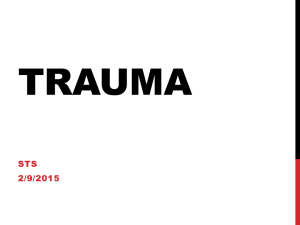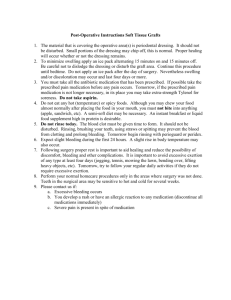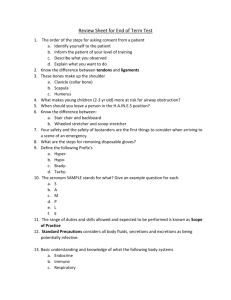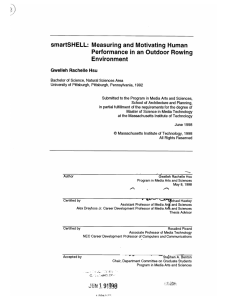CREWMAN-Zuniga - Boatswainsmate.net
advertisement
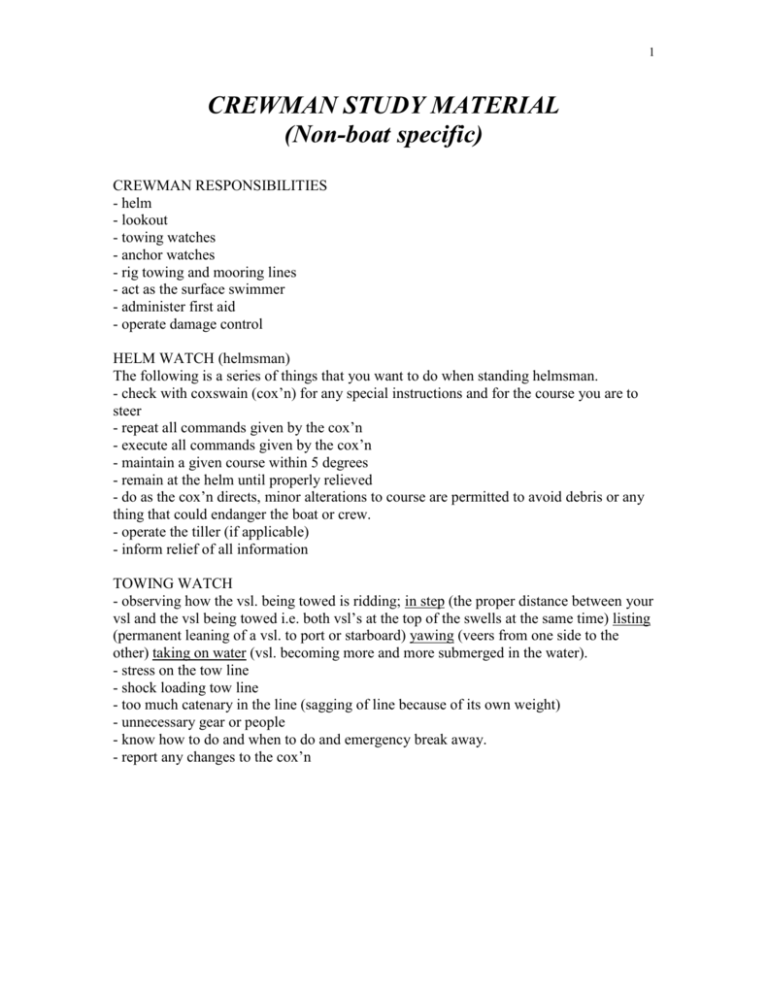
1 CREWMAN STUDY MATERIAL (Non-boat specific) CREWMAN RESPONSIBILITIES - helm - lookout - towing watches - anchor watches - rig towing and mooring lines - act as the surface swimmer - administer first aid - operate damage control HELM WATCH (helmsman) The following is a series of things that you want to do when standing helmsman. - check with coxswain (cox’n) for any special instructions and for the course you are to steer - repeat all commands given by the cox’n - execute all commands given by the cox’n - maintain a given course within 5 degrees - remain at the helm until properly relieved - do as the cox’n directs, minor alterations to course are permitted to avoid debris or any thing that could endanger the boat or crew. - operate the tiller (if applicable) - inform relief of all information TOWING WATCH - observing how the vsl. being towed is ridding; in step (the proper distance between your vsl and the vsl being towed i.e. both vsl’s at the top of the swells at the same time) listing (permanent leaning of a vsl. to port or starboard) yawing (veers from one side to the other) taking on water (vsl. becoming more and more submerged in the water). - stress on the tow line - shock loading tow line - too much catenary in the line (sagging of line because of its own weight) - unnecessary gear or people - know how to do and when to do and emergency break away. - report any changes to the cox’n 2 ANCHOR WATCH - check strain and tending on anchor line frequently, report to cox’n at least every 15 minutes - report all vsl’s. approaching - maintain a sharp lookout - watch for dragging and chafing - check position SURVIVAL EQUIPMENT: - Signal Whistle-heard up to 1,100 yards - MK-124 MOD0-red flare, orange smoke approx 20 seconds each - MK-79 kit- MK-31 (launcher) MK-80 (flares)- 4.5 second burn 250-650 ft. 12,000 candle power, red star. - Distress Signal Light-50-60 flashes per minute +/- 10, 100,000 candle power, 9 hours continuous use, 18 hours intermittently. MK-127A1- parachute illumination signal. 650-750 feet, 36 second burn, white star flare, 125,000 candlepower, descends at a rate of 10 to 15 feet per second. FIRST AID - evaluate scene - consider amount of rescuers training and equipment - use proper personal protective equipment (PPE) - keep calm - act quickly - call station or group/sector as appropriate to activate EMS Moving a Patient Notify station so that appropriate medical resources can be activated If possible, avoid moving patient until person is examined and all injuries are protected by properly applied splints, dressing ect. If head and/or neck injury is suspected, immobilize prior to movement Seed assistance before moving a patient. For conscious patients, always explain the move procedure in advance Patient movements should be careful, deliberate, and the minimum required Almost all patient are transported laying down Treating for Shock Causes Trauma (bleeding, falling, hit by blunt object, fractures and burns) Allergic reactions Hypothermia Drugs Toxins Heart attack Illnesses such as diabetes Emotional 3 Symptoms Restlessness Faint Thirst Nausea Weakness Anxiousness Fright Dizziness Signs Pulse- weak and rapid -normal pulse for an adult irregular, strong, and between 60-100 beats per minute. A shock patient will appear restless, and has a pulse that is weak and rapid usually greater than 100 beats per minute. Breathing- shallow, rapid and irregular -normal adult is between 16-24 breaths per minute, shock patient will usually be either less than 16 breaths or greater than 24 breath. Immediate assistance is required in these situations to avoid respiratory arrest. Skin- cold and clammy (sweating) -adult skin is normally dry, not excessively pale or wet to the touch, and the observed mental condition is normally calm. Pupils- dilated State of consciousness- alert (may be deceiving) to unconscious. -Any time a person’s level of consciousness is other than alert, it is an indication to immediately seek medical assistance. Treatment Check for “medic alert” or other tags Obtain history for medical problems (heart disease, diabetes, allergies, medication) Notify station, group/sector to obtain help and transport as advised Provide specific treatment if advised and trained to do so Position flat on back, elevate to lower extremities about 8-10 inches, if no head or trouble breathing and being careful of any other injuries CPR if needed Slow warm, if already hot do not warm If person was in the water, remove cloths first Never give anything to eat or drink especially alcohol Handle with care 4 ANAPHYLACTIC (OR DISTRIBUTIVE) SHOCK -rapid extreme allergic reaction. Can be onset with in minutes, can also cause death with in minutes or delay up to two hours. Causes Eating fish or shellfish, particular types of berries or oral drugs such as penicillin Insect stings Injected drugs Exercise Cold Inhaled substances Symptoms and signs Skin: itching, hives, redness Swelling of lips, tongue, feet, throat and hands Respiratory tract: wheezing, shortness of breath, coughing Gastrointestinal: nausea and vomiting, abdominal cramps, diarrhea Headache Sense of impending doom Loss of consciousness Treatment If victim carries an epinephrine kit (or epi pen) you may assist them in administration if trained CPR if needed Do not minimize an allergic reaction Activate EMS Record all that is observed or performed Reactions with similar symptoms include hyperventilation, alcohol intoxication, hypothermia, low blood sugar and anxiety attack. RESCUE BREATHING Victim has a pulse, no breathing Head tilt chin lift 2 slow breaths (if breaths go in) 1 breath every five seconds 5 CPR Establish unresponsiveness Look to see if the chest rises and falls, Listen for exhalation out mouth or nose, Feel for pulse or responsiveness 2 fingers above the notch at the bottom of the sternum Adult 15 breaths to 2 breaths, child 5-1 and infant 5-1. Infants give one minute of care before calling EMS BLEEDING Three types of bleeding Arterial - Blood that is coming from an artery, bright red in color and gushes forth in jets or spurts in sync with pulse Venous - Blood coming from a vein, dark red in color and come out at a steady pace Capillary - Comes from capillaries (smaller veins), bright red in color and oozes from wound Control the bleeding - Apply direct pressure with clean sterile dressing and elevate - If the bleeding soaks through the dressing than do not remove, add more dressing - If bleeding persists, use a pressure point to slow the bleeding The pressure points are: Temporal- scalp or head, do not use for more than 30 seconds to avoid cutting off blood to the brain Facial- on each side of the chin, do not use for more than 2 minutes, just to slow blood from a cut on the face Carotid- where you find a pulse on the neck, just below jaw on left or right side, feel for heart beat. Only apply pressure to one side at a time. Only use pressure for a few seconds to avoid cutting off circulation to the brain. Subclavian- deep under the collarbone on left or right side. Press artery against collar bone Axillary- in between the bicep and bone on either arm Brachial- in between the bicep and bone right above the elbow on either arm Radial Ulnar- radial is on the forearm close to the wrist on the thumb side of the hand and the ulnar is on the pinky finger side. Apply pressure to both points to control bleeding of the hand. Use the radial point to control bleeding to the wrist. Femoral- front center part of the crease in the groin area, pelvic basin, left and right side. Use the heel of your hand and apply a small amount of pressure to control bleeding to the lower extremities Popliteal- back of the knee, apply pressure to slow bleeding on a leg wound Doralis pedis- top of foot, for a cut on the food and toes 6 METHODS OF CONTROLLING BLEEDING Direct pressure and elevation (primary) Pressure points (secondary) Tourniquet (life or limb)- mark a T on the forehead and the time do not loosen FRACTURES Ensure to check circulation when splinting BURNS Types First degree- slight redness of outer layer of skin, increased warmth, tenderness and mild pain. Second degree- extends through outer layers of skin. They produce blisters, severe pain, redness and warmth Third degree- most severe, penetrate the full thickness of the skin, destroying both inner layers and outer layers of the skin. The pain of a second degree burn may be gone do to the fact that the nerve ending may have been destroyed. Color may be anywhere from white and lifeless to black and charred. Third degree burns don’t heal for many months and cause severe scaring. TreatmentFirst degree Soak in cool water until pain is relieved. Flush chemical burns for at least 20 minutes. Cover with clean or sterile air tight wrap. Second degree Same treatment as a firs degree burn. Do not break any blisters. Cover with a dry sterile, non adhesive dressing Third degree or severe second degree Cover the burn to reduce exposure to air Cool the burn Do not remove clothing unless smoldering Treat for shock even if not apparent Always obtain medical care Monitor patients airway Assess vital signs every 5 minutes Give nothing to eat or drink Do not put ice on burn Do not apply ointments Burns to the respiratory tract are always a medical emergency CHEMICAL BURNS Flush burn for at least 20 minutes. If it is a powder, brush off as much as possible then flush. If it involves eyes, flush eyes for 5 minutes and cover with a clean dry dressing. 7 STABILITY Buoyancy The upward force of water displaced by the hull (weight and buoyancy are the two primary forces acting upon a floating vessel that affect stability). Center of buoyancy Center of gravity of displaced water Center of gravity The point at which the weight of the boat acts vertically downwards Types of stability Longitudinal (fore and aft)- balances the boat and prevents it from pitch-poling (end over end). Transverse (athwartships)- keeps the boat from capsizing or rolling over. Longitudinal plane is usually (fore and aft) is usually more stable than a transverse plane (beam). Moment- The force that causes a vessel to return to an even keel, or up right position. Righting moment- The force that causes a vessel to react against a roll and return to an even keel. Generally, the wider the beam the more stable the boat is. Forces that affect stability Static- forces that are within the hull (inside), weight shifted around in the boat. i.e. people moving from one side of the boat to the other side of the boat. Dynamic- forces that are outside the hull. i.e. winds, swell all other natural forces. Free surface effect- When a liquid that only partly fills a compartment (lose water) moves due to a turn, speed changes or wave action and causes the boat to not want to right itself. Mainly found of fishing vessels. Aids to navigation Floating (buoy) Fixed (beacon) - red are even (conical or “nun” buoys, triangle day board) - green are odd (cylindrical or “can” buoys, square day board) - helpful hint, Red Right Return. When entering a channel have the Red buoy on your Right side as you are Returning home. - safe water buoy or day board- alternating red and right vertical stripes. 8 PERSON IN THE WATER RECOVERY When person goes overboard throw the life ring and strobe towards the person. If they are conscious they can swim to it, otherwise it is used as data for searches After data is thrown person who saw the PIW acts as the pointer and will communicate with the coxswain. Do not go forward of the window or coxswain, it will reduce visibility to the coxswain. Verbal communication such as MAN OVERBOARD, MAN OVERBOARD, PORT/STARBOARD SIDE. Will be said and repeated. Give barring and distances to the coxswain. Do not take your eyes off the PIW. When the coxswain says that they have a visual you can secure. Give amplifying information such as face up or face down, conscious or unconscious ect. A surface swimmer will be made ready as needed. Swimmer will be wearing proper harness and another crewmember will be tending the tending line. A person is designated as the recovery person and will stand by to receive and pick up the PIW. Included in the pointers information, they will pass information like how the speed is (fast, slow, good), distance off the side of the boat While doing the above, the pointer will move towards the stern at the same pace as the PIW, acting as a visual marker for the coxswain. Then will assist the recovery person on the recovery of the PIW. When the PIW is on board, make sure to check the airway, breathing and circulation. Report findings to the coxswain.



